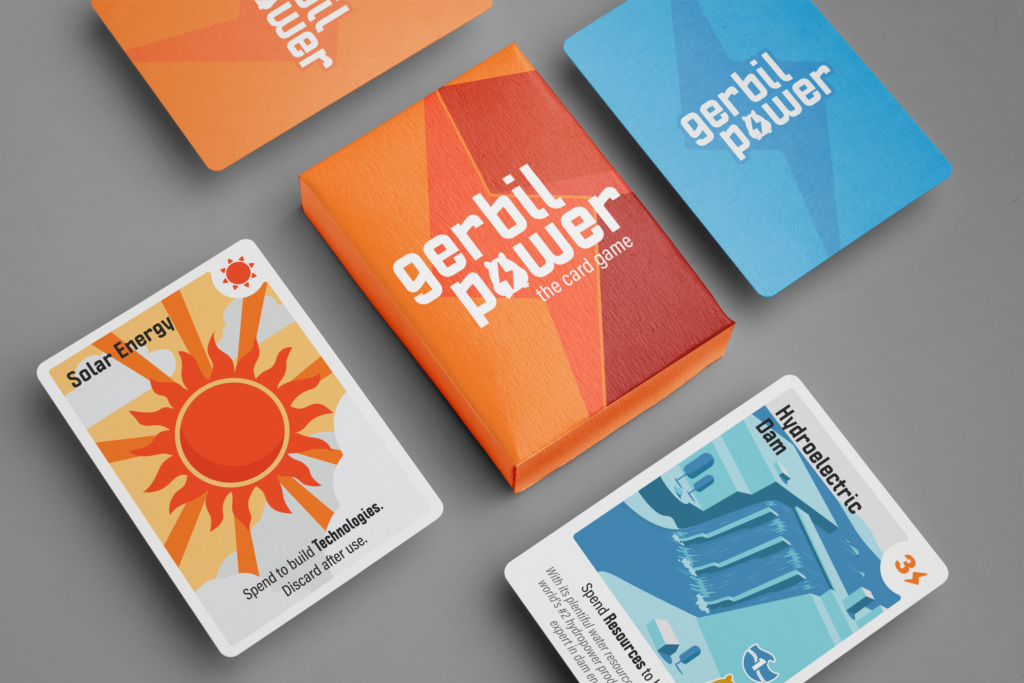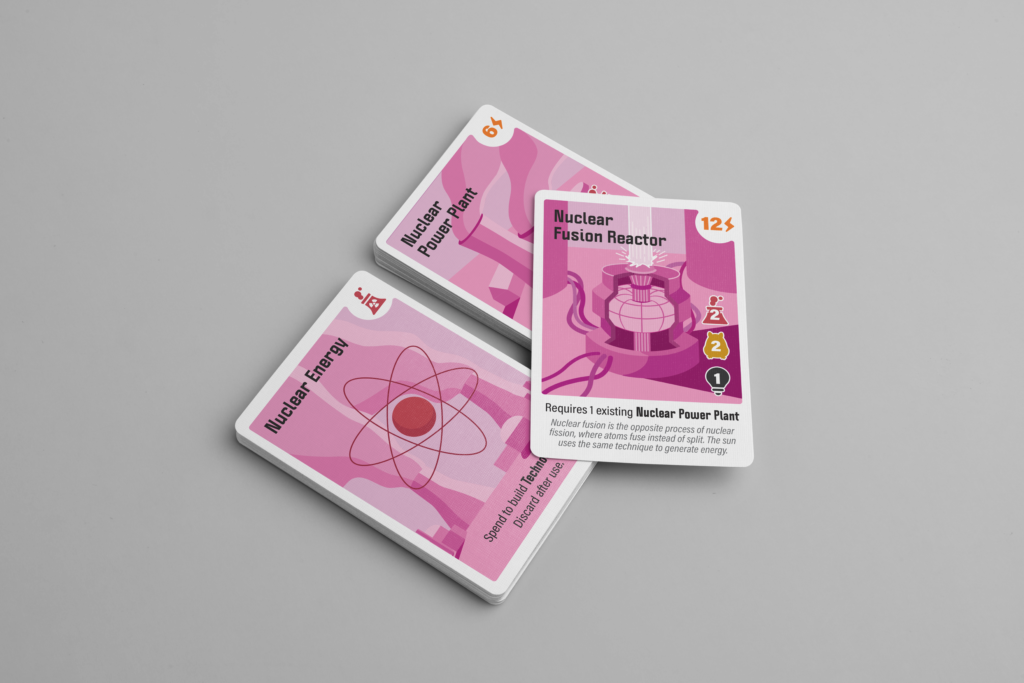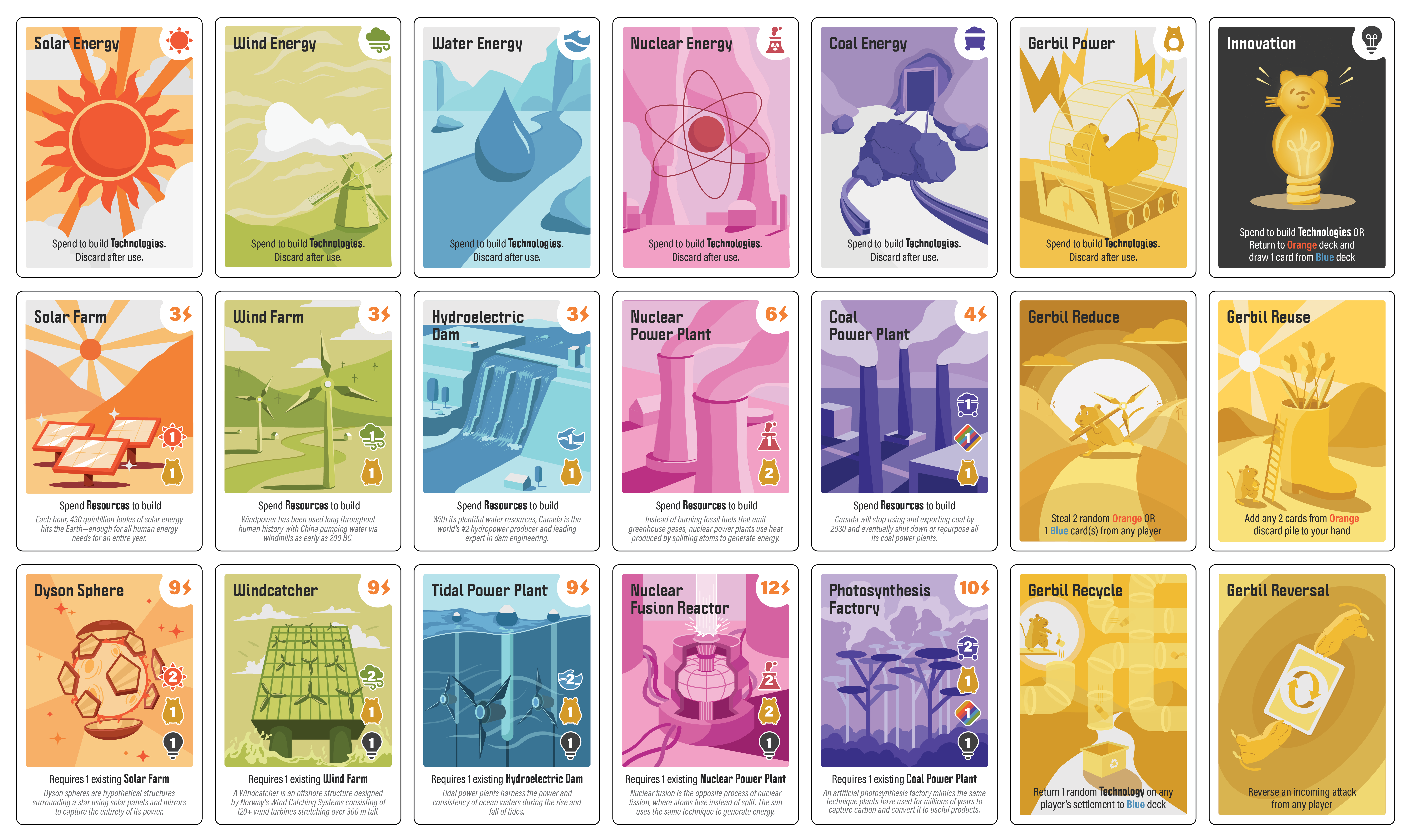
Gerbil Power
An all-ages, strategy game based on collecting resources and building renewable technologies
Card Game
Gerbil Power
An all-ages, strategy game based on collecting resources and building renewable technologies
Card Game
Challenge:
As part of a 12 day design sprint, we were tasked to create a visual product based on the theme 'New Energy'. We wanted to create an interactive, educational game with a whimsical theme and style.
Solution:
Through its gameplay, Gerbil Power allows players to learn about renewable energy resources and technologies that are on the forefront of generating new forms of renewable energy.
Tools
Miro, Adobe Illustrator, Adobe InDesign, Adobe Photoshop
Client
Vesalius Trust Competition 2022
Role
Project Manager and Team Lead
Team members
Amy Jiao, Avila Sanchez, Emily Tjan, Stephen Nacthsheim, Vanessa Nguyen
Target Audience
Teens and adults, card game enthusiasts
Challenge:
As part of a 12 day design sprint, we were tasked to create a visual product based on the theme 'New Energy'. We wanted to create an interactive, educational game with a whimsical theme and style.
Solution:
Through its gameplay, Gerbil Power allows players to learn about renewable energy resources and technologies that are on the forefront of generating new forms of renewable energy.
Tools
Miro, Adobe Illustrator, Adobe InDesign, Adobe Photoshop
Client
Vesalius Trust Competition 2022
Role
Project Manager and Team Leader
Team Members
Amy Jiao, Avila Sanchez, Emily Tjan, Stephen Nacthsheim, Vanessa Nguyen
Target Audience
Teens and adults, card game enthusiasts
Process (Pre-Production)
Ideation, Roles and Project Set-up
Our process started with generating ideas through a word map centered around the theme of ‘New Energy’. After deciding to build a card game, we immediately divided ourselves into an Art team and a Game Design team based on our interests and skillsets to divide the responsibilities.
In my role, I was responsible for overseeing each team’s work and coordinating our combined efforts. To do this, I created a schedule, deliverables board and mapped out our 12-day sprint to ensure each process was contiguous with the next.
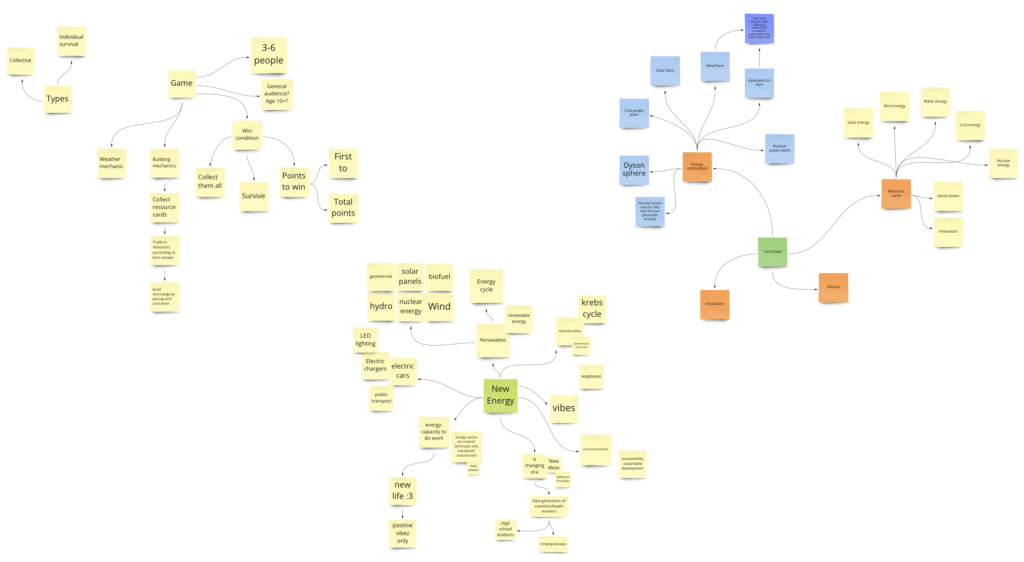
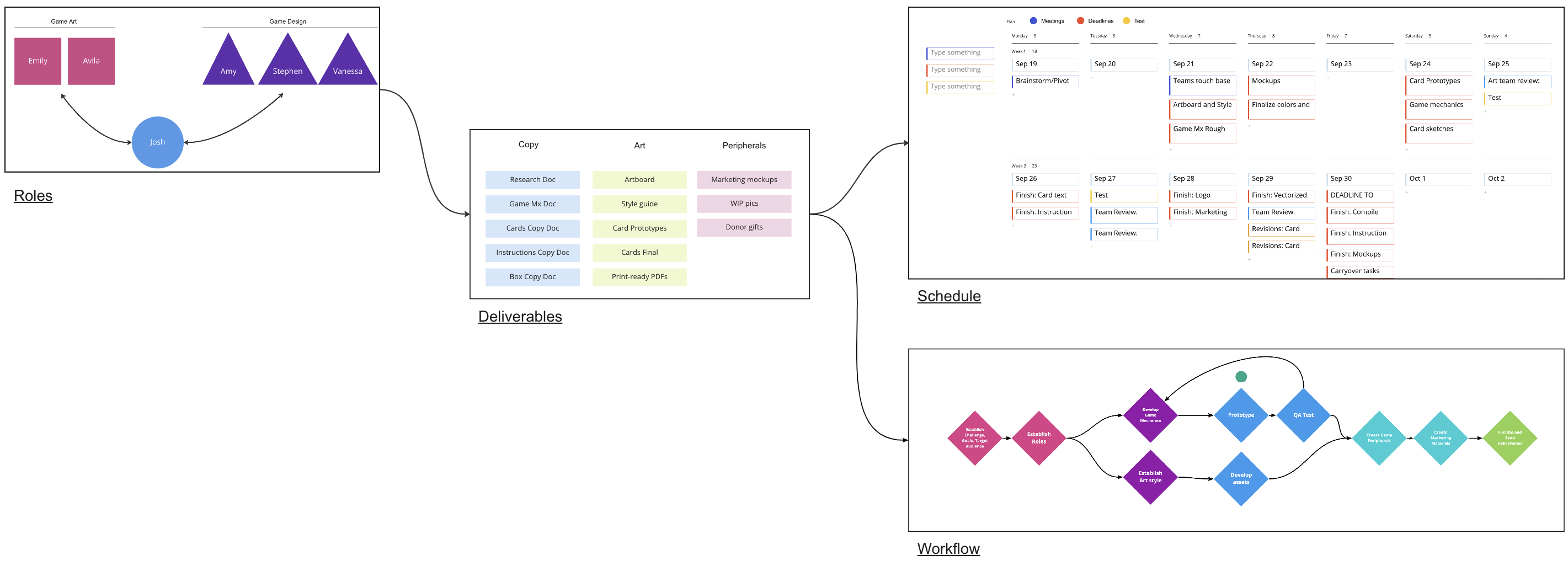
Game Design
At this stage, the main and peripheral game mechanics were set to get a rough sense of the gameplay. Using this information, we were able to create a list of cards that the Art team can start on while the Game Design team continued to refine the card counts, scoring system and game text through various alpha testing sessions.
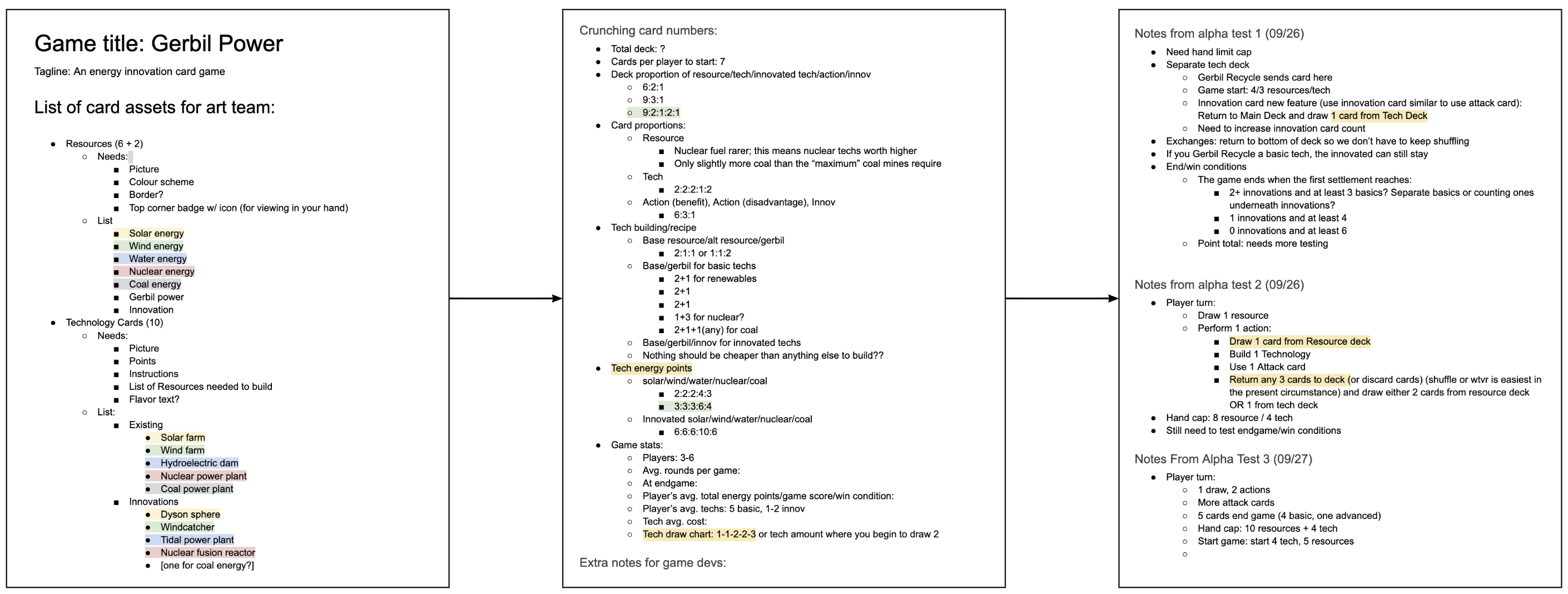
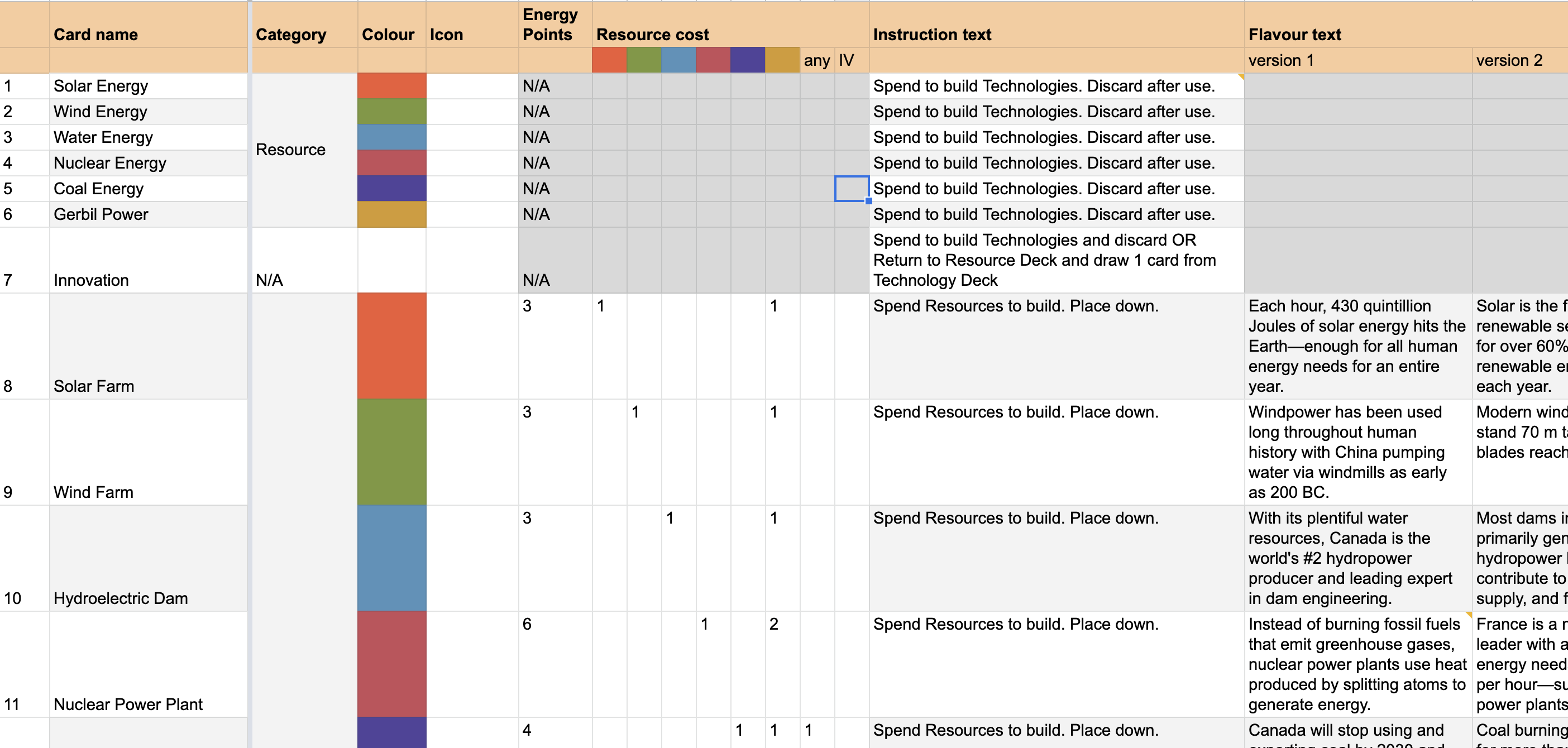
Game Art
Simultaneous to the game design development, the Art team began their work in creating the style of the game. First, a mood board was created with bold, whimsical styles in mind. Using this board, the colours of each card archetype were selected to keep each visibly unique. Iterations of each card type’s layouts were created using Adobe Illustrator while keeping considerations of game mechanics and player usability in mind.
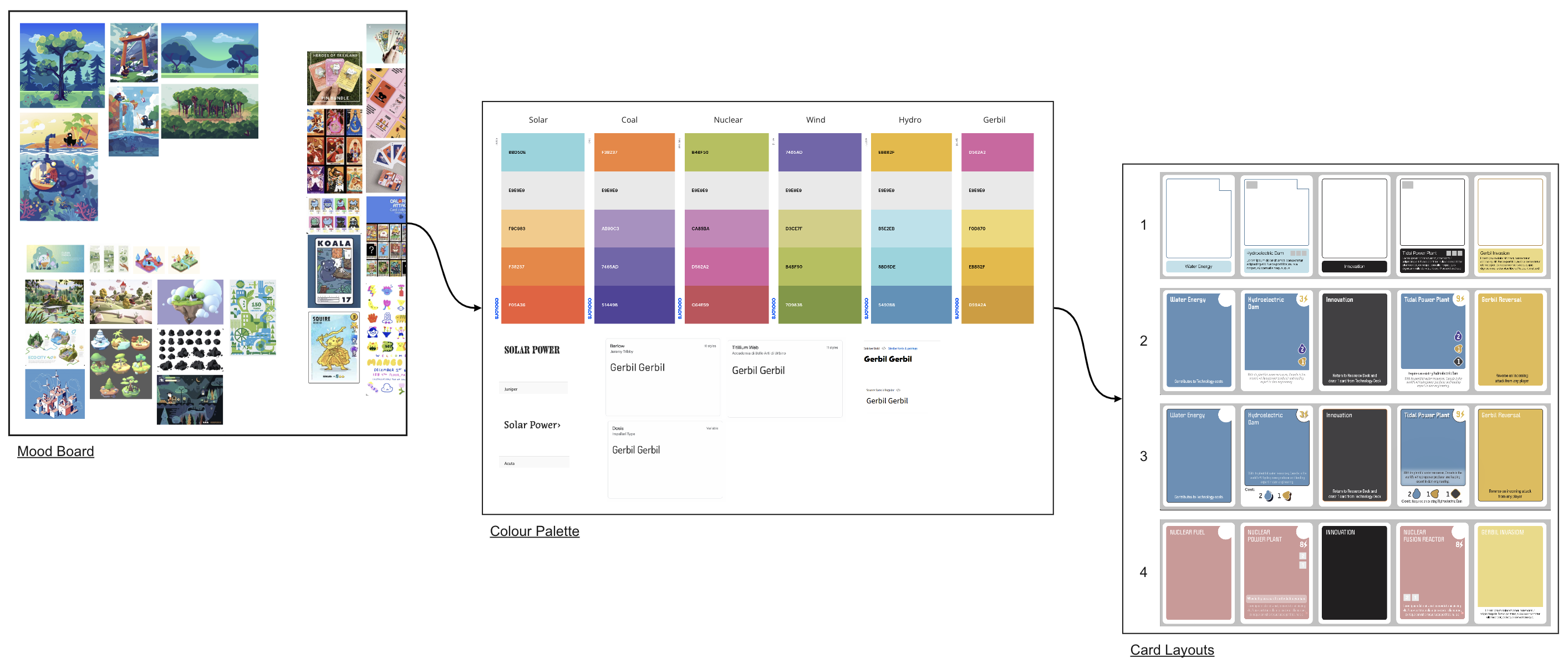
Process (Production)
Game Art (Sketch, Render, Review)
During this stage, the Art team focused on creating the assets needed for each card by dividing ourselves to work on one archetype each. After comprehensive sketches were made, we conducted an Art team review to check for consistency in style and theme. An additional team-wide review was conducted after the rendered illustrations were completed.
Our asynchronous review process involved utilizing various coloured sticky notes and symbols on Miro to denote different stages and comments about each illustration.
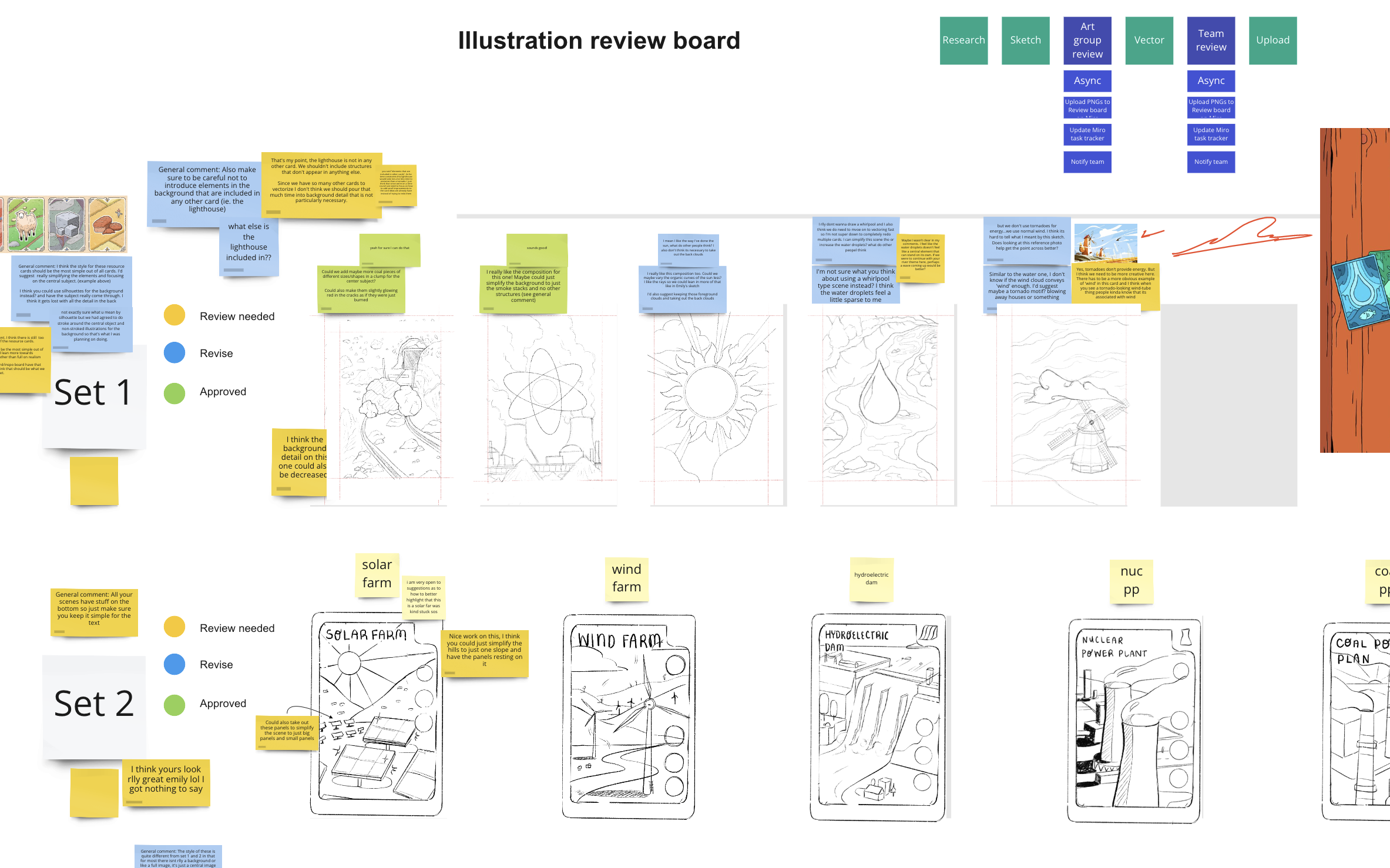
Compilation and Mockups
Adobe InDesign was used to compile the card art with the template and text. Adobe Photoshop was used to create mockups.
